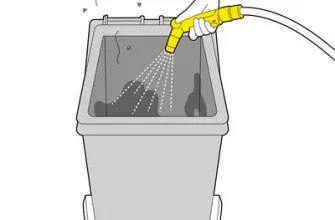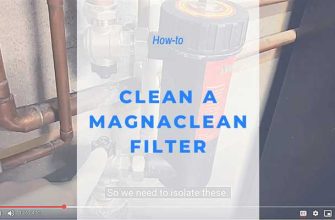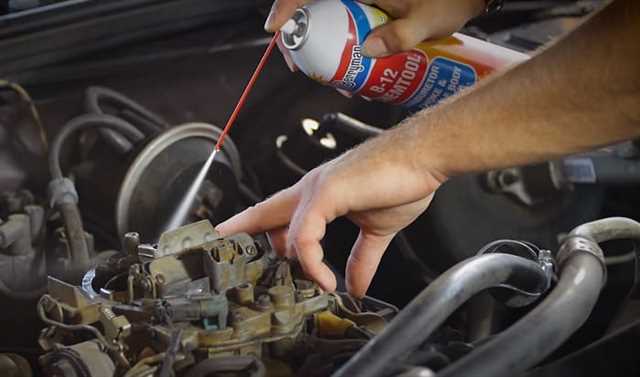
If your car is overheating, running poorly, or experiencing a loss of power, it may be time to clean the carburettor. The carburettor is a vital component of your car’s fuel system, responsible for delivering the proper fuel-to-air ratio for optimal engine performance. Over time, however, the carburettor can become clogged with debris, causing poor fuel flow and a variety of performance issues.
Cleaning your carburettor regularly is essential to ensure your car continues to perform at its best. A dirty carburettor can cause the engine to run lean, resulting in issues such as hard starting, rough idling, or even engine stalling. By following this step-by-step guide, you can clean your carburettor on your own without the need to visit a mechanic or dealer.
To begin the cleaning process, you will need a few tools and supplies. These include a can of carburettor cleaner, a small brush or toothbrush, a clean cloth, and a can of compressed air. It is also important to have a copy of your car’s service manual on hand for reference, as different carburettor designs may require slightly different cleaning methods.
Start by removing the air cleaner cover and air filter, exposing the carburettor. Carefully disconnect any hoses, cables, or electrical connections attached to the carburettor, taking care not to damage any of the connections. Use a clean cloth to wipe away any loose dirt or debris found on the outside of the carburettor.
Next, spray the carburettor cleaner into all the carburettor’s openings and passages. Be sure to follow the instructions on the cleaner can for best results. Allow the cleaner to soak into the carburettor for about 5 minutes, which will help to loosen any clogs or deposits. Use the brush or toothbrush to scrub away any remaining debris, and then use the compressed air to blow out any loosened dirt.
- Engine Starting Problem
- Check the Connections
- Engine Running Lean
- Causes of Engine Running Lean
- Symptoms of Engine Running Lean
- Diagnosing and Resolving Engine Running Lean
- Engine Running Rich
- How to Fix an Engine Running Rich:
- Overheating Problems
- Cleaning Of Car Carburetor
- Signs that your carburetor needs cleaning:
- How to clean a car carburetor:
- Engine Idling
- In conclusion
- Video:
- How to Clean andamp; Rebuild Your Carburettor
Engine Starting Problem
- If you are experiencing an engine starting problem, it is often a small issue that can be resolved with proper cleaning and maintenance of your carburettor.
- One of the most common issues that can cause starting problems is a clogged carburettor. Over time, debris and stale fuel can build up in the carburettor, leading to clogs and poor performance.
- In some cases, the carburettor may become flooded with fuel, causing the engine to run rich and making it difficult to start. This can be especially problematic in road-going vehicles.
- To clean the carburettor, you can try using a carburettor cleaner. These cleaners are relatively inexpensive and can help remove any deposits or clogs that may be causing problems.
- It is important to note that cleaning the carburettor should be done periodically as part of routine maintenance, especially if you notice any issues with starting or idling.
- Another potential cause of starting problems is a malfunctioning choke. The choke helps control the airflow into the carburettor, and if it is not functioning properly, it can cause the engine to run too lean or too rich.
- If you are unsure of how to perform carburettor cleaning or if the problem persists after cleaning, it is best to seek the assistance of a local dealer or mechanic who has experience with carburettor problems.
- Failure to address carburettor issues can eventually lead to more serious problems with your vehicle, such as engine overheating or poor fuel efficiency.
- When troubleshooting an engine starting problem, it is also important to check the connections to the carburettor. Loose or deteriorated connections can prevent fuel from properly entering the carburettor, resulting in difficulty starting the engine.
- In some cases, you might also notice smoke coming from the carburettor or a strong smell of fuel. These are signs that the carburettor is not functioning correctly and may require cleaning or repair.
Check the Connections

Before beginning the cleaning process, it is important to check the connections of the carburettor. This step will ensure that the carburettor is properly connected and will help you identify any potential issues such as fuel leaks or loose connections. Follow the steps below to check the connections:
- Inspect the Fuel Line: Start by visually inspecting the fuel line that connects the fuel tank to the carburettor. Look for any signs of wear or damage, such as cracks or leaks. If you notice any issues, it is recommended to replace the fuel line to prevent fuel leaks.
- Check the Throttle Linkage: Next, check the throttle linkage to ensure that it is properly connected and functioning smoothly. Move the throttle back and forth to check for any resistance or sticking. If you encounter any problems, such as a sticky or loose throttle, it might be necessary to adjust or replace the throttle linkage.
- Inspect the Vacuum Lines: In addition to the fuel line, it is important to inspect the vacuum lines that are connected to the carburettor. Check for any cracks or leaks in the vacuum lines. If you find any issues, replace the vacuum lines to ensure proper functioning of the carburettor.
By checking the connections of the carburettor, you can prevent potential problems such as fuel leaks, engine overheating, or poor performance. It is best to perform these checks periodically to ensure that the connections are in good condition. If you notice any malfunctioning or issues with the connections, seek the assistance of a local mechanic for further inspection and repair.
Engine Running Lean
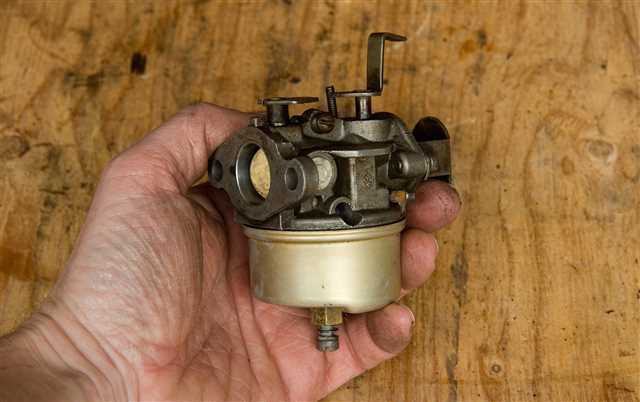
When an engine is running lean, it means that the air-fuel mixture in the carburettor is not at the optimal ratio for efficient performance. This can lead to a variety of problems, including decreased power, poor fuel economy, and potential damage to the engine. Understanding the causes and symptoms of a lean-running engine can help you take the necessary steps to diagnose and resolve the issue.
Causes of Engine Running Lean
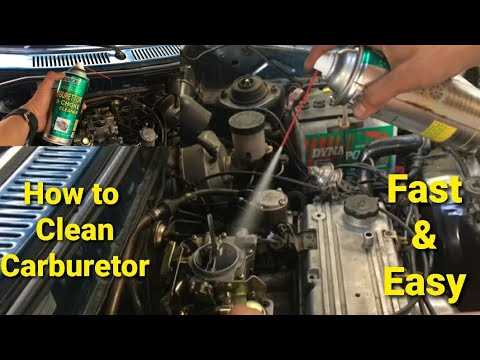
- Restricted fuel supply: If the carburettor is not receiving enough fuel, it can cause the engine to run lean. This can happen due to clogged fuel lines, a faulty fuel pump, or a restricted fuel filter.
- Air leaks: Any air leaks in the intake system can cause the engine to run lean. These leaks can be due to a cracked intake manifold or vacuum lines.
- Malfunctioning carburettor: A poorly adjusted or dirty carburettor can result in a lean-running engine. Deposits and debris can accumulate in the carburettor, affecting the proper mixture of air and fuel.
Symptoms of Engine Running Lean
There are several symptoms that can indicate a lean-running engine:
- Engine hesitates or stumbles during acceleration.
- The engine runs hot and may experience overheating.
- Increased fuel consumption.
- The engine may idle roughly or may not idle at all.
- Poor throttle response.
- The engine may backfire or produce popping sounds during deceleration.
Diagnosing and Resolving Engine Running Lean
If you suspect that your engine is running lean, it is important to properly diagnose and resolve the issue to prevent further damage. Here are the steps you can take:
- Check for visible signs of fuel leaks or air leaks in the carburettor and intake system.
- Remove and clean the carburettor to remove any deposits or debris that may be causing the lean condition.
- Use carburettor cleaners/stabilizers to remove any gum or varnish that may be affecting the carburettor’s performance.
- Inspect and clean or replace the fuel filter if necessary.
- Check the fuel pump for proper operation and replace if needed.
- Ensure that the carburettor is properly installed and adjusted.
- If the issue persists, seek professional help to diagnose and resolve the problem.
In conclusion, an engine running lean can cause various performance issues. It is important to regularly check and clean your carburettor to prevent lean conditions and associated problems. By performing periodic maintenance and keeping an eye out for symptoms, you can ensure that your engine is running at its best.
Engine Running Rich
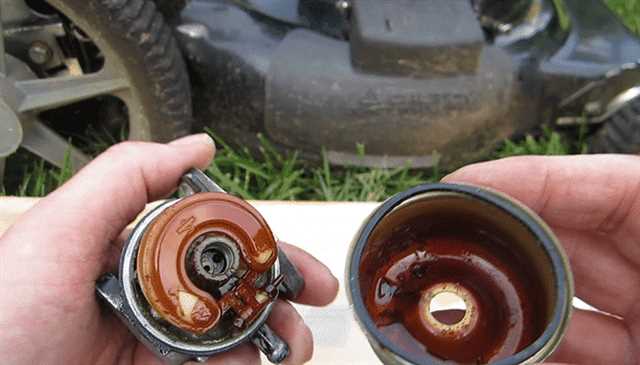
One of the common problems that can occur with a carburettor is when the engine is running rich. This means that the air-fuel mixture in the carburettor is too rich with fuel, which can lead to poor engine performance and higher fuel consumption.
There are several reasons why an engine might be running rich. One possibility is that the air filter or intake system is clogged with debris, preventing sufficient air from reaching the carburettor. Another potential cause is a malfunctioning fuel pump or fuel injector, which can deliver an excessive amount of fuel to the carburettor.
One surprising problem that can cause an engine to run rich is the use of stale or deteriorated fuel. When fuel sits for too long, it can break down and lose its combustibility, leading to a rich air-fuel mixture. It’s important to regularly check and clean the carburettor to prevent this issue.
If you suspect that your engine is running rich, there are a few steps you can take to diagnose the problem. First, check the spark plugs to see if they are black and sooty, which is an indication of a rich air-fuel mixture. You can also perform a visual inspection of the carburettor for any signs of fuel pooling or dripping.
How to Fix an Engine Running Rich:
- Inspect the air filter and intake system for any signs of debris or clogs. Clean or replace them as necessary.
- Check the fuel pump and fuel injectors for proper functioning. If they are malfunctioning, it’s best to take your vehicle to a dealer or qualified mechanic for repair.
- Consider using fuel cleaners or stabilizers to improve the fuel quality and combustion.
- Adjust the carburettor’s air-fuel mixture to a leaner setting, if possible. Consult your vehicle’s manual for instructions on how to do this.
- If the issue persists, it may be necessary to replace the carburettor or seek professional help to diagnose and fix the problem.
In conclusion, an engine running rich can lead to poor performance, increased fuel consumption, and potential damage to the engine. Regular cleaning and maintenance of the carburettor, along with proper fuel quality, can help prevent this problem. If you suspect that your engine is running rich, it’s best to take appropriate steps to address the issue and ensure optimal engine performance on the road.
Overheating Problems
Overheating can be a common problem in vehicles, and it can often be attributed to a dirty or poorly maintained carburettor. When the carburettor becomes clogged with debris, it can cause the engine to run lean, leading to overheating issues. Here are some common signs that indicate your carburettor may be causing your vehicle to overheat:
- Engine running too hot: If your engine is consistently running hot, it might be a sign of a malfunctioning carburettor. Overheating can occur when the carburettor is not delivering enough fuel to the engine.
- Poor idle quality: A carburettor that is clogged or dirty can lead to poor idle quality. This can cause the engine to run rough and potentially overheat.
- Surprising engine shutdown: If your engine suddenly shuts down while driving, it could be due to an overheating carburettor. The lack of fuel delivery can cause the engine to stall and potentially overheat.
- Difficulty starting the engine: A dirty carburettor can make it difficult to start the engine. If your vehicle is struggling to start, it may be due to a carburettor issue that could lead to overheating.
- Poor performance: An overheating carburettor can lead to poor overall performance of the vehicle. This can include decreased power, acceleration, and fuel efficiency.
If you suspect that your carburettor may be causing overheating problems in your vehicle, it is suggested to clean or have it cleaned periodically. Cleaning the carburettor can help remove any clogs or deposits that may be causing issues. There are carburettor cleaner products available at your local auto parts store, which you can use according to the instructions on the product label.
For proper cleaning, it is recommended to remove the carburettor from the engine. This will allow you to thoroughly clean all the small passages and connections. If you are not comfortable doing this yourself, you can contact a professional mechanic or your vehicle’s dealer for assistance.
Once the carburettor is removed, you can soak it in a carburettor cleaner solution. Be sure to follow the instructions on the cleaner for the appropriate soaking time. After soaking, use a small brush or toothbrush to scrub away any remaining deposits. Rinse the carburettor with clean water and allow it to dry before reinstalling it into the engine.
In addition to cleaning, you can also use fuel stabilizers and cleaners to help prevent carburettor issues. These products help keep the fuel clean and free from deposits that can cause clogs or malfunctions.
By taking proper care of your carburettor and performing regular cleaning, you can prevent overheating problems and ensure optimal performance of your vehicle.
In conclusion, overheating problems can often be attributed to a dirty or poorly maintained carburettor. Signs such as poor idle quality, difficulty starting, and poor overall performance are indicators that your carburettor may need cleaning. It is important to perform periodic cleaning and use fuel stabilizers to prevent clogs and malfunctions that can lead to overheating. If you are unsure or uncomfortable with cleaning the carburettor yourself, contact a professional mechanic or your vehicle’s dealer for assistance.
Cleaning Of Car Carburetor
To ensure optimal performance of your car, it is important to regularly clean the carburetor. The carburetor is responsible for mixing air and fuel in the correct proportions before it enters the engine. Over time, it can become clogged with dirt, debris, and deposits, leading to poor engine performance and other issues.
Signs that your carburetor needs cleaning:
- Poor engine performance
- Surprising smoke or flames coming from the exhaust
- Idling problems
- Difficulty starting the car
- Overheating
- Rich or lean running
If you notice any of these signs, it’s time to clean your carburetor.
How to clean a car carburetor:
- Check the car’s manual to locate the carburetor and familiarize yourself with its components.
- Disconnect the carburetor from the fuel and electrical connections.
- Remove the carburetor from the engine. Be careful not to damage any small parts in the process.
- Use a carburetor cleaner to spray and soak the carburetor. Avoid contact with rubber or plastic parts, as the cleaner can deteriorate them.
- Clean the outside of the carburetor with a brush to remove any dirt or debris.
- Inspect the carburetor for any clogs or issues. Use a wire or small tool to unclog any blocked passages.
- Soak the carburetor in a cleaning solution for a few minutes to remove stubborn deposits.
- Rinse the carburetor with clean water and dry it thoroughly.
- Reinstall the carburetor back into the engine, ensuring proper connections.
- Check the throttle and make any necessary adjustments.
- Start the engine and check for any issues or poor performance. Seek professional help if needed.
Cleaning your car’s carburetor on a periodic basis can avoid problems like poor performance and engine flooding. It is best to follow the manufacturer’s recommendations or seek guidance from a local dealer or mechanic.
Proper care and cleaning of your car’s carburetor can make a significant difference in its overall performance and fuel efficiency. Without regular cleaning, it can lead to clogs and other issues that can affect the overall functioning of your vehicle. So, take the time to clean your carburetor and enjoy a smooth and efficient driving experience.
Engine Idling
Idling is when the engine is running but the vehicle is not in motion. It is important to pay attention to engine idling, as it can impact the performance and overall health of the carburetor. Here are some key points to keep in mind:
- Proper Idling: Your engine should idle smoothly without any fluctuations in RPM. If you notice that your engine is idling too high or too low, it may indicate underlying issues with the carburetor.
- Signs of Problems: There are several signs that may indicate a carburetor problem during idling. These include rough idling, stalling, poor fuel efficiency, and black smoke coming from the exhaust.
- Seek Professional Help: If you are not familiar with carburetor cleaning and maintenance, it is recommended to seek the assistance of a professional technician. They have the necessary knowledge and tools to diagnose and fix carburetor-related issues.
- Use Carburetor Cleaners/Stabilizers: Regular use of carburetor cleaners and stabilizers can help prevent deposits and clogs in the carburetor. Be sure to follow the instructions provided by the manufacturer when using these products.
- Periodic Cleaning: Cleaning the carburetor on a regular basis is essential to maintain optimal performance. This helps to remove any dirt, debris, or varnish buildup that can hinder the proper functioning of the carburetor.
- Be Careful: When cleaning the carburetor, be careful with small and delicate parts. They can easily get damaged if not handled with care. Additionally, make sure to disconnect the fuel line and take appropriate safety precautions.
Remember, idling problems can affect the overall functionality of your engine and lead to other issues such as overheating, flooding, or lean running. Taking care of your carburetor and addressing idling issues when they arise will ensure smooth running and optimal performance of your vehicle.
In conclusion
Engine idling is an important aspect of carburetor maintenance. Be aware of any signs of problems during idling and take necessary actions to address them. Regular cleaning and the use of appropriate cleaners/stabilizers will help keep your carburetor in good condition, ensuring optimal engine performance. If you are unsure or uncomfortable performing carburetor maintenance yourself, it is always best to contact a local dealer or seek professional help.


